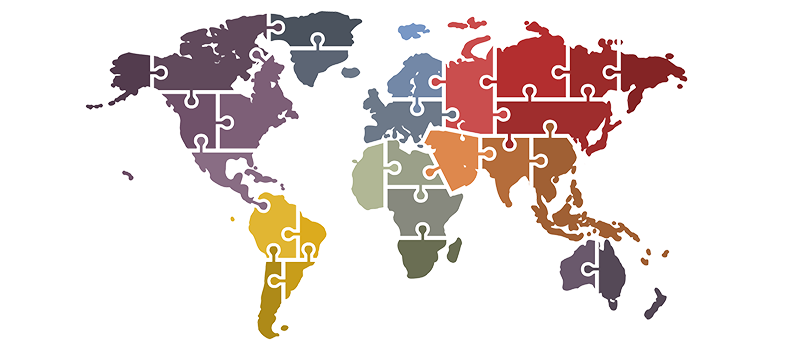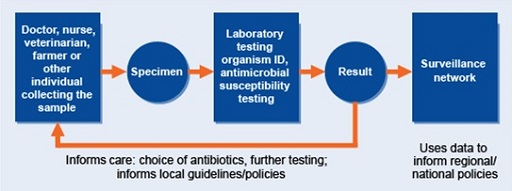4 Factors affecting local and national surveillance operations
Local surveillance sites collect, collate and submit AMR data to the NCC, who analyse these data at the national level and may also submit data to WHO GLASS. Hospitals make for ideal AMR surveillance sites, owing to the volume of patient samples routinely processed, the availability of epidemiological and laboratory expertise on site, and the existence of a framework for laboratory processing and documentation of samples that aid clinical decision making. For all these reasons, AMR surveillance sites are almost always set up to operate within existing hospitals.
Surveillance sites rely on their own local AMR data collection systems. Figure 3 is a good representation of how local AMR data collection systems should look and how they link to national AMR surveillance systems.
Let us now discuss the key considerations for the effective functioning of a national AMR surveillance system. The responsibility for ensuring that these considerations are applied lies both with the local surveillance sites and with the NCC at the national level.
3.4 National systems in action




